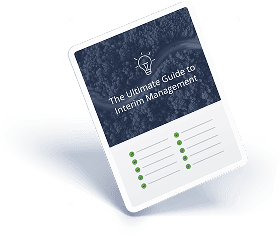“If you cannot explain it simply, you do not understand it well enough.”
— Albert Einstein
Most leaders know the power of an elevator pitch — that concise, compelling speech you’d give the CEO if you found yourself sharing an elevator. But what about when the tables turn? What if it’s your job, as a leader, to share your vision with your team?
Enter the reverse elevator speech — the 30-to-60-second message every leader needs to master.
The reverse elevator speech is particularly relevant for interim professionals as it enables rapid alignment and impactful engagement. Interims can swiftly grasp an organization’s core challenges and, by articulating the company’s problem and their proposed solution concisely, immediately gain executive buy-in and establish their value. This approach cuts through complexity, fosters quick consensus for change initiatives, and frames the interim’s role as a direct solution provider from day one.
What Is a Reverse Elevator Speech?
Unlike a traditional elevator speech that sells an idea up the organizational chain, a reverse elevator speech communicates direction downward — from leader to team. It’s a short, punchy way to clarify your strategy, align your team, and inspire action. Delivered well, it energizes; delivered poorly, it confuses or bores.
As I explain in my new book, The Why Whisperer: How to Motivate and Align Teams that Get Your Strategy Done, a reverse elevator speech is like a movie trailer for your strategy: it should hook people in, set the stage, and leave them excited to be part of what comes next.
Consistently using the reverse elevator speech allows interim leaders to clearly communicate their strategic impact and the value they’re delivering, which is crucial for proving success in short-term roles and securing future opportunities. It transforms them into highly aligned, impactful strategic partners who deliver maximum results in minimal time.

The Five-Part Formula
A great reverse elevator speech follows a simple structure:
- Hook — Capture attention with a compelling statement or question.
- Problem — Name the key challenge your organization or team is facing.
- Solution — Share your vision or plan to address it.
- Benefits — Explain why this plan matters to the team — and what’s in it for them.
- Call to Action — Tell people what you want them to do next.
Keep it focused on the essence; this isn’t a verbal PowerPoint presentation.
Avoid the Monologue Trap
Leaders often make the mistake of turning the reverse elevator speech into a lecture. To truly engage your team as an interim leader, follow up with open-ended questions like:
- “What are you working on right now that you’re most excited about?”
- “What challenges do you see ahead?”
Then, practice active listening — pay attention, ask clarifying questions, and show genuine interest. Connecting your team’s individual goals to the bigger picture of the organization fosters engagement and trust.
Make It a Conversation, Not a Command
The reverse elevator speech isn’t just about telling; it’s about connecting. After sharing your vision as the interim leader, tie it back to how each person’s work contributes to the broader mission, and offer support. By listening and engaging, you help your team see where they fit and why their contributions matter.
Practice Makes Perfect
Delivering a clear, confident reverse elevator speech takes practice. Try these exercises to sharpen your skills:
- Role-play with a colleague to simulate real conversations.
- Observe meetings and reflect on opportunities to apply reverse elevator speech techniques.
- Record and review yourself practicing your speech.
- Use one-on-ones to try out and refine your message in real time.
Real-World Examples
1. Tech Startup Pivoting to B2B
- Hook: “We’re starting an exciting new chapter.”
- Problem: “The consumer market is overcrowded.”
- Solution: “We’re shifting to B2B enterprise solutions.”
- Benefits: “This will drive sustainable growth and open bigger opportunities.”
- Call to Action: “Explore how your skills can help us succeed in the B2B space.”
2. Driving a Culture of Innovation
- Hook: “Do you feel like your ideas sometimes go unheard?”
- Problem: “Fear of failure is stifling innovation.”
- Solution: “We’re creating a culture that celebrates bold ideas.”
- Benefits: “We’ll adapt faster, attract talent, and thrive.”
- Call to Action: “Let’s challenge the status quo together.”
3. Boosting Team Collaboration
- Hook: “Imagine a team where everyone feels heard and respected.”
- Problem: “Miscommunication is slowing us down.”
- Solution: “Let’s commit to better communication and teamwork.”
- Benefits: “We’ll solve problems faster and build stronger relationships.”
- Call to Action: “Embrace open dialogue and mutual respect.”
The Bottom Line
A well-crafted reverse elevator speech is a powerful tool interim leaders can use to clarify direction, motivate the team, and build engagement — all in under a minute. Done right, it opens doors; done wrong, it slams them shut.
So, the next time you step into a meeting or a casual hallway chat, ask yourself: Could I explain our direction in 60 seconds or less?
If not, it’s time to craft your reverse elevator speech — and start practicing today.
________
Are you ready for an innovative leader to take your organization to the next level? Reach out to us for a confidential conversation about how an interim CEO, COO, CFO, CMO, or CIO can be the answer to your company’s challenges.








